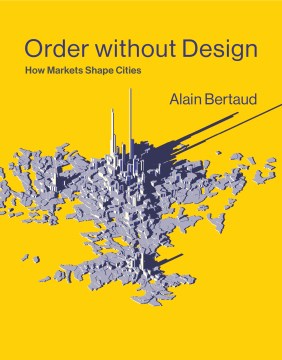
Order Without Design
Publisher,Mit Pr
Publication Date,
Format, Hardcover
Weight, 1124.91 g
No. of Pages, 413
This book emerges from a 55-year career in urban planning, and is illustrated by the author's real-world experience. Without understanding how markets work, urban planners are likely to design infrastructure and regulations that will adversely impact the functioning of cities. By contrast, urban economists review decisions and outcomes after the fact, often publishing their conclusions in specialized journals that fail to influence decision making. This book is a call for qualitative urban planners and quantitative urban economists to come together. Specifically, the book calls for urban economists to take a larger role in the process of operational urban planning. For example, land prices decrease the further away one gets from a city center. When landprices are high, households and firms consume less land; that is, they live in smaller homes and work in smaller offices. Population density then increases because the city is still a desirable place to be, and you can fit more people in smaller spaces. While urban planning often tries to limit densities, it is almost impossible to do so when the price of land is high. Without understanding the factors that lead to high prices, urban planners cannot effectively plan cities, and rents skyrocket and commutes take longer. Cities generate a large amount of data, often recorded in urban departments, but remain unused; urban economists can make use of this new data and provide answers to critical questions in urban economic development. The book does not introduce new concepts of urban economics but uses existing theories to try to improve the practice of urban planning. It looks at such topics as infrastructure, housing affordability, transportation, labor markets, regulation, mobility, and pollution--

